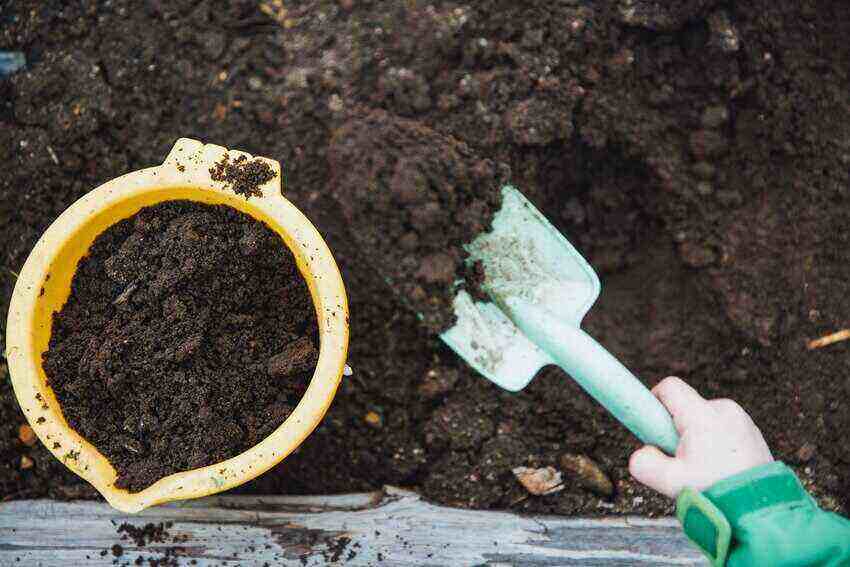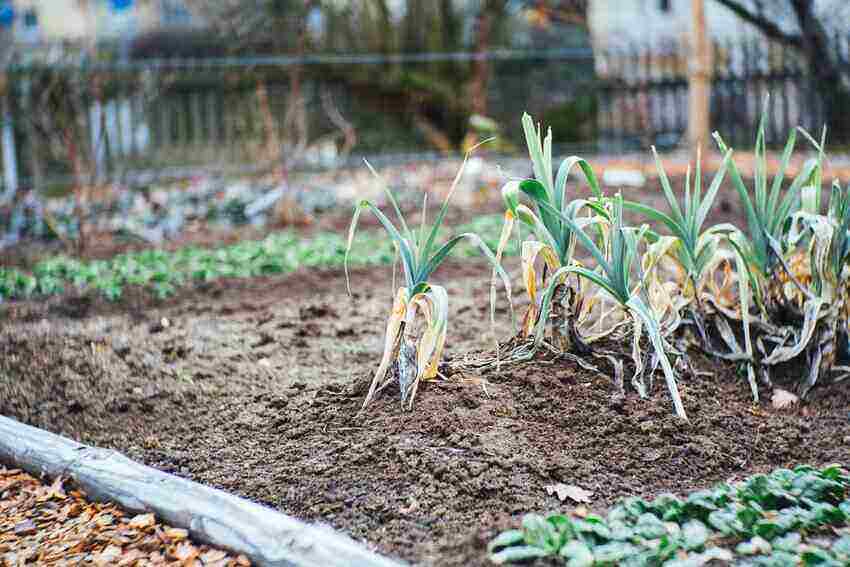As a beginner pot planter, you may have many questions regarding pot planting, right? Such a common question that we get asked frequently is what happens if I accidentally used garden soil in pots. Is it okay or not? The straight answer is if you directly use garden soil without any amendment this might harm the container plants and even kill them. Thus it’s best practice to avoid this.
This also largely depends on the garden soil that you use in pots. Not all soil will harm the container plants equally. Here you have to consider the soil’s constituents. By the way, let’s know how to fix it when you accidentally use garden soil in pots!
Everything You Need to Know After Accidentally Using Garden Soil in Pots

Before we move on to the consequences of using garden soil in a pot let’s discuss first different types of garden soil so you get a clear understanding of which garden soil is bad for container plants.
Types of Garden Soil
We can classify yard soil into different types and each one has distinct features. Some of the common home garden soils are-
- Garden soil from the yard
- Commercial garden soil
- Potting soil
- Compost
- Seed starting mixture
Garden Soil of The Yard
Garden soil compromises different elements like sand, clay, or silt that are very compacted thus showing poor drainage and aeration. When you use this soil in the yard bugs, wombs, and microorganisms provide great aeration. But if you use it in containers, it gets dense with watering.
Rather than garden soil, if you purchase topsoil from the store, this will also show such problems to use in containers. The difference between garden soil and topsoil is that the topsoil is screened and shredded which eliminates large particles from the topsoil.
Both the topsoil and garden soil are heavy due to high density and feature a lack of nutrients that container plants require. Thus they aren’t a good choice for healthy pot gardening.

Commercial Garden Soil
This type of bagged yard soil has a blend of topsoil and sand with wood ingredients such as pine mulch. These soils are good for container gardens due to the fine particles. They hold water in the right way and can sink pot plants’ roots, especially for thin pots.
Potting Soil
Potting soil is also named potting mix. It is the most appropriate option for vegetables and growing flowers inside pots. The main ingredients of potting mix or soil are-
- Woody/decomposed material (around 50-65%)
- Perlite or vermiculite
- Sphagnum peat moss
- Fertilizer
- Wetting agent

Compost
Some experts claim that compost is 100% okay for pot plants. But another group doesn’t get desired output. The leaf mold compost is the right lighter mix, this might be great for pots. But if you plan to use regular compost i.e. the slug compost, blend it with a minimum of 50% soil-free potting soil so it won’t get compacted.
Seed Starting Mix
Some people think seed starting mix and potting mix as the same. But this is not correct. The seed starting mix has no soil actually. It’s used to sprout and grow new plants from seeds (like squash). There is no need of using either garden soil or potting soil to produce the desired seed starting blend.
What Happens If You Use Garden Soil in Pots?
Some garden soils really do have problems with the container plants. For example, if you use Miracle-Gro type garden soil or Vigoro garden soil in potted plants, you may experience several complications. Garden soil is heavier than mixed potted soil. So, using garden soil makes it harder to transfer the pot.
The additional weight will cause hinder watering due to high density. It will also lead to compaction of the soil that won’t allow for draining easily. It will also restrict airing in the soil. Moreover, garden soils lack nutrients compared to the soil of the container so using this in the pot will deficit of nutrients.
However, if you plan to use garden soil in pots, it’s recommended to improve moisture retention, nutrient level, aeration, drainage, etc.
Will It Kill The Potted Plants If You Accidentally Used Garden Soil in Pots?
If you directly use yard soil in the pot, it can possibly be prone to death in the container plants. If you see any sign of dying the pot plants, fix it soon. Firstly, unpot the plants then dump the potting soil in a bucket instead of tossing it away. Then blend the soil and mix proper nutrients with the soil.
What Can I Use in Containers Instead of Potting Soil?
When you use commercial garden soil (that is not the same as garden soil) in pots, it’s important to fix it soon. For a quick solution, you can add some coarse perlite then poke around the potting soil with a chopstick for a well-mixed. After that, go for watering there. However, if you mix garden soil in containers, repotting the plants might be the best solution.
As most potted gardeners prefer perlite, sphagnum, or moss vermiculite with peat one should keep in mind that you need the right ingredients to ensure proper aeration, drainage, and nutrients. You can use 1 part of moisture retention ingredients, and 1 part of aeration and drainage material with the right quantity of nutrients.
The recipe to use to make suitable for potted plants include-
- 1 part topsoil, woody material, or garden soil
- 1 part coco coir as the moisture retention element
- 1 part perlite for drainage
- Bone meal for a balanced compost
If you need more ideas the following section will help you a lot.
Aeration & Drainage
Have you wondered which materials can be used for drainage and aeration in the mix? You can use different materials like perlite, horticulture land, and PBH rice hulls.
Perlite
Perlite ingredient is actually volcanic glass and lightweight material. It is popped up and heated like popcorn. So, this will be great for soil aeration.
Horticultural Sand
This is gritty sand used for developing drainage. It is made of quartz, crushed granite, or sandstone.
PBH Rice Hulls
This reduces dust from the greenhouse blending. Rice hulls are a good substitute for perlite and they are cheaper than perlite.
Moisture Retention
While considering potting soil, it’s important to ensure proper aeration and drainage. Without moisture retention, the soil will be compacted like a brick. Some of the good materials that help greatly in moisture maintenance in the potting mix are peat moss, Coconut coir, Vermiculite, Leaf mold, Pitt Moss, Woody materials, Worm castings, etc. Here are some of their short descriptions.
Peat Moss
It is an organic element that can hold water and nutrients well like a sponge. Peat moss increases soil structures greatly by holding the moisture contents without leaking them out.
Vermiculite
Vermiculite is a group of minerals. It also improves nutrient and water retention. This lightweight material helps plants to absorb various nutrients such as potassium, magnesium, ammonium, and calcium.
PittMoss
It consists of paper fibers and proprietary ingredients. PittMoss is invented by Pittsburgh.
Womb Castings
They are made from the waste of farmed earthworms, beneficial microbes, and rich nutrients. They are great to hold moisture.
Fertilizer
Too low or very high-level of fertilizer (not the citrus one) is harmful to potted plants. So, it’s important to maintain the proper ratio of the fertilizer ingredients. As container plants like parsnips only receive nutrients that you apply into the pot. Thus, you should apply DIY potting soil for healthy plants.
For each fertilizer, there are three important ingredient ratios which is the N-P-K ratio. A fertilizer labeled 15-10-5 means it contains 15% Nitrogen (N), 10% phosphorous (P), and 5% Potassium (P). The remaining 70% of the pack’s product contains carrier products.
Nitrogen plays an important role in leaf growth and develops fruit as well as flower production. Phosphorus strengthens the plant’s roots and develops flowering and fruiting just like the tomato plants where flowering happens early. Potassium promotes plants’ vigor and heartiness.
Before purchasing the fertilizer consider which nutrients your plants need most then purchase it accordingly. Some of the good pot fertilizers are Miracle Grow Multi-Purpose Plant Food, Blood Meal, Bone Meal, Osmocote, Liquid Kelp, Worm castings, etc.
FAQs on Using Garden Soil In Pots
Can you mix potting soil with garden soil?
You can mix pot soil with garden soil in particular cases like the raised bed. Still, you need to adjust the mixture. But, it’s not a good idea to mix in the container.
Can you use old potting soil in your garden or indoor plants?
Yes, you can do it but blend it to mix the proper nutrients there before you use it in the garden or indoor plants.
Final Say on Accidentally Using Garden Soil in Pots
From the above discussion, you might understand, that garden soil has lack nutrients, moisture contents, and drainage and aeration. When you accidentally used garden soil in pots, the topsoil or garden soil in pots gets compact thus water can’t drain properly. So, using it directly on potted plants would be harmful and even kill the plants.
But, you can turn the garden soil into pot soil by amending the garden soil. Use a ratio of 1:1:1 for garden soil, drainage and aeration component, and moisture retention material with a balanced fertilizer. Hopefully, this will help to stop killing potted plants after using garden soil and doing container planting in the right way.
A short video on using garden soil in pots:

I’m Shofi, a passionate gardener and blogger. I have 10+ years of experience in gardening and hold certifications in horticulture and garden design. I share my knowledge and skills through my garden blog to inspire and educate others on the joys of gardening. I try to provide valuable information and create a community for gardeners of all levels to connect and learn. My ultimate goal is to inspire others to start their own gardens and connect with nature.


Thanks for your blog, nice to read. Do not stop.
Thanks a lot!